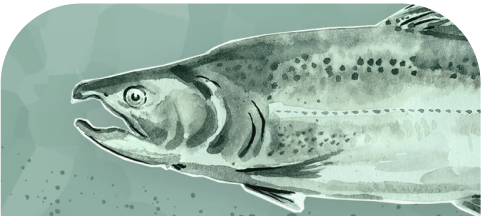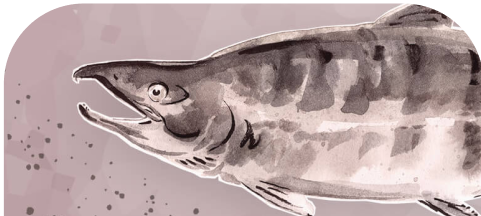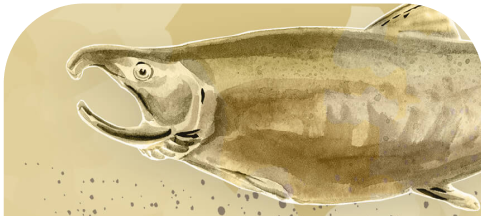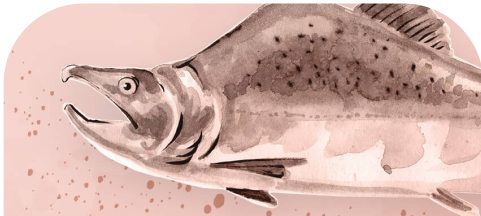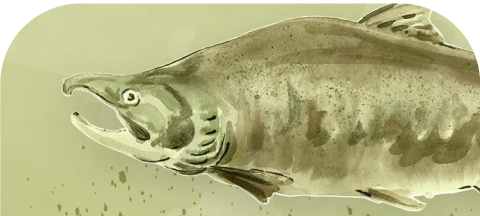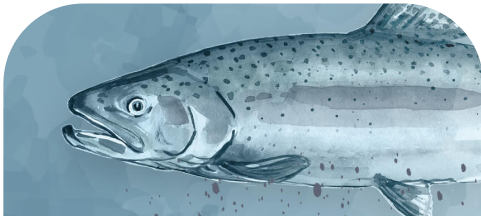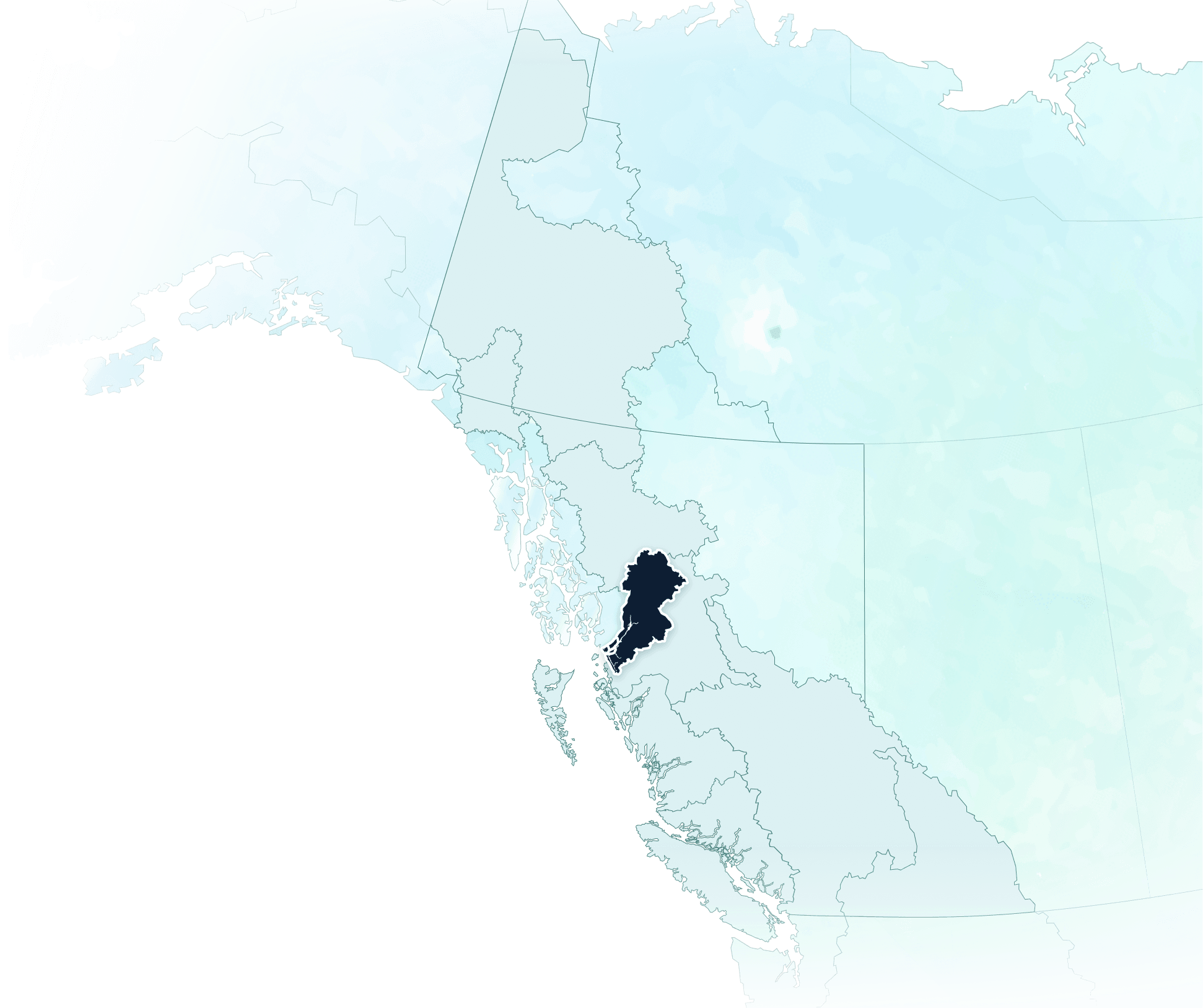Nass
Chum salmon are the furthest below average, while coho and pink salmon are well-above average
Nass salmon currently have one of the most positive outlooks of all regions. All species have increased in abundance in the past year, though Chinook, chum and steelhead are all still below the long-term average for spawner and total abundances.
Chum salmon are a significant conservation concern in the region. Spawner abundance has been relatively low since the early 2000s and remains well-below the long-term average.
Although sockeye spawner abundance is above the long-term average, total abundance is below average and not all populations in the region are doing well. The largest population - Meziadin Lake - has not met its spawning goal† in six of the last 10 years†.
Coho and pink are both above average with positive long-term trends. However, caution is warranted for pink salmon, as abundance tends to fluctuate more than other species and current status can change dramatically from year to year.


State of Salmon - Nass
OUR APPROACH
There are different ways to measure the state of salmon, and each approach tells us something unique about how salmon are doing.
CURRENT STATE is the spawner or total abundance over the most recent generation as a per cent anomaly from the long-term average and provides information on how abundant salmon are now relative to past years.
TRENDS measure the direction of change, either over the short-term (most recent three generations) or long-term (all available years). This is complementary information to the current state, and a species that has a declining trend may be a conservation concern even if the current status is above average.
Click on a species for an interpretation of the current state and trends.
Arrows indicate if the trend in abundance is increasing or decreasing
A horizontal line indicates if the trend in abundance is stable
A question mark indicates an unknown current state or trend due to a lack of readily accessible data


SPECIES NOT PRESENT
SPECIES NOT PRESENT
SPECIES NOT PRESENT
SPECIES NOT PRESENT
SPECIES NOT PRESENT
SPECIES NOT PRESENT
SPECIES NOT PRESENT
SPECIES NOT PRESENT
SPECIES NOT PRESENT
SPECIES NOT PRESENT
SPECIES NOT PRESENT
SPECIES NOT PRESENT
How to Interpret this Graph
Each fish above shows the per cent anomaly of current spawner or total abundance over the most recent generation compared to the long-term average (horizontal line) for each region and species.
Interested in more learning more? Check out the Pacific Salmon Explorer for a data-driven look at Pacific salmon Conservation Units and their habitats within each region.
For more details on our assessment approach, view our Methods.
Well-above long-term average. No conservation concern.
Above long-term average. Current outlook is good.
At or near long-term average. Precaution is warranted.
Below long-term average. Current outlook is poor.
Well-below long-term average. Significant conservation concern.
Unknown current state due to a lack of readily accessible data.

REGION PROFILE
Nass
Conservation Units are irreplaceable groups of salmon that have unique genetic and life-history traits. Maintaining multiple Conservation Units within a region strengthens the resilience of the species as a whole and helps it withstand and adapt to changing conditions. The number of Conservation Units provides a good indication of the salmon biodiversity in the region.
SPECIES NOT PRESENT
Major Salmon-Bearing Rivers
The Nass River is British Columbia's third-largest watershed, with a drainage area of 20,700 square kilometres. Major tributaries include the Bell-Irving, Cranberry, Meziadin, Kwinageese, and Damdochax rivers.
Meziadin Lake hosts a large, naturally productive sockeye population, which accounts for 70-80 per cent of all Nass salmon†. However, more than 250 other populations of spawning salmon contribute to high levels of biodiversity in the region.
Under the Nisga’a Final Agreement of 1992, the Nisga’a Fish and Wildlife Department is responsible for salmon monitoring and management throughout much of the watershed. The Nisga’a operate two fishwheels, along with a video counter at the outlet of Meziadin Lake, which are used for biological sampling and developing spawner estimates for many Nass salmon populations†. There is also a counting fence at Ksi Tsoohl Tsap that supports the only coded-wire tag indicator program on a wild coho population in the province.


